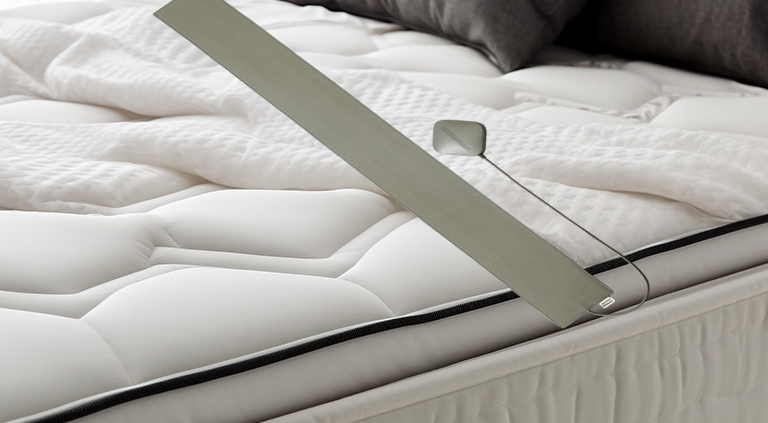The application of thin-film pressure sensors in smart sleep systems is becoming increasingly widespread due to their high sensitivity, flexibility, and durability, making them a crucial component of smart sleep mattresses. By integrating thin-film pressure sensors, smart sleep mattresses can achieve real-time monitoring and data analysis of users’ sleep states, thereby improving sleep quality.
Real-time Sleep State Monitoring
Thin-film pressure sensors can accurately detect the pressure distribution of users on the mattress. Through a sensor array, the mattress can record users’ movements and changes in position during sleep. This data helps users understand their sleep habits and allows them to view and analyze their sleep state in real-time through mobile applications or other devices. This real-time monitoring function enables users to gain a better understanding of their sleep quality and identify factors affecting their sleep.
Providing Personalized Sleep Recommendations
Based on the collected sleep data, smart sleep systems can generate detailed sleep reports and provide personalized sleep recommendations. For example, if the system detects excessive pressure in a specific sleeping position, it can suggest adjusting the mattress firmness or changing sleeping posture. Additionally, by accumulating and analyzing long-term data, the system can identify factors affecting sleep quality, such as environmental noise and room temperature, and offer corresponding improvement suggestions.
Automatically Adjusting Mattress Firmness
Some high-end smart sleep mattresses incorporate automatic adjustment functions. Thin-film pressure sensors continuously monitor the user’s posture and pressure distribution. When excessive pressure is detected in a certain area, the system can automatically adjust the mattress firmness to increase comfort and avoid discomfort and health issues caused by prolonged pressure. This automatic adjustment feature not only improves sleep quality but also prevents health problems resulting from poor sleeping positions.
Monitoring Health Indicators
In addition to monitoring sleep states, thin-film pressure sensors can combine with other sensors to monitor the user’s respiratory rate, heart rate, and other health indicators. By analyzing this data, the smart sleep system can provide a more comprehensive health report, helping users detect potential health issues early and take preventive measures. For example, the system can detect abnormal changes in respiratory rate during sleep, suggesting potential sleep apnea and prompting the user to seek medical advice.
Data Security and Privacy Protection
During data collection and transmission, smart sleep systems need to ensure user privacy and data security. Data collected by thin-film pressure sensors is encrypted and transmitted to the cloud or local devices to prevent data breaches. Users can also choose how to store and share their data, fully protecting personal privacy. Developers of smart sleep systems should strictly comply with data protection laws and regulations, ensuring that user data is used solely for improving sleep quality and health management and not misused or disclosed.
Conclusion
The application of thin-film pressure sensors in smart sleep systems provides users with a more scientific, comfortable, and personalized sleep experience. With continuous technological advancements, smart sleep systems will become increasingly intelligent and refined, helping more people improve sleep quality and enhance overall health. By continuously optimizing and innovating, smart sleep mattresses will offer better sleep solutions to users, promoting a healthier lifestyle.



